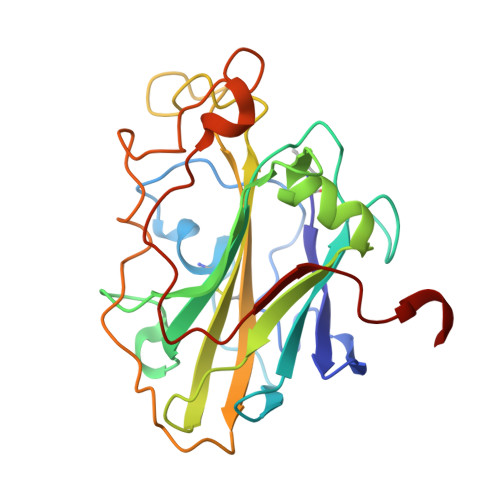The molecular basis of polysaccharide cleavage by lytic polysaccharide monooxygenases.
Frandsen, K.E., Simmons, T.J., Dupree, P., Poulsen, J.C., Hemsworth, G.R., Ciano, L., Johnston, E.M., Tovborg, M., Johansen, K.S., von Freiesleben, P., Marmuse, L., Fort, S., Cottaz, S., Driguez, H., Henrissat, B., Lenfant, N., Tuna, F., Baldansuren, A., Davies, G.J., Lo Leggio, L., Walton, P.H.(2016) Nat Chem Biol 12: 298-303
- PubMed: 26928935
- DOI: https://doi.org/10.1038/nchembio.2029
- Primary Citation of Related Structures:
5ACF, 5ACG, 5ACH, 5ACI, 5ACJ - PubMed Abstract:
Lytic polysaccharide monooxygenases (LPMOs) are copper-containing enzymes that oxidatively break down recalcitrant polysaccharides such as cellulose and chitin. Since their discovery, LPMOs have become integral factors in the industrial utilization of biomass, especially in the sustainable generation of cellulosic bioethanol. We report here a structural determination of an LPMO-oligosaccharide complex, yielding detailed insights into the mechanism of action of these enzymes. Using a combination of structure and electron paramagnetic resonance spectroscopy, we reveal the means by which LPMOs interact with saccharide substrates. We further uncover electronic and structural features of the enzyme active site, showing how LPMOs orchestrate the reaction of oxygen with polysaccharide chains.
Organizational Affiliation:
Department of Chemistry, University of Copenhagen, Copenhagen, Denmark.


















